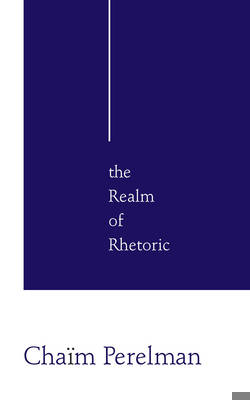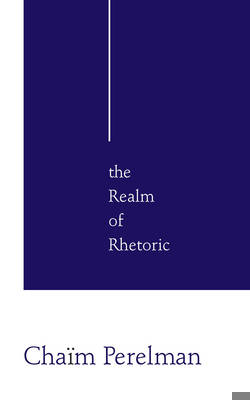
- Afhalen na 1 uur in een winkel met voorraad
- Gratis thuislevering in België vanaf € 30
- Ruim aanbod met 7 miljoen producten
- Afhalen na 1 uur in een winkel met voorraad
- Gratis thuislevering in België vanaf € 30
- Ruim aanbod met 7 miljoen producten
Zoeken
Omschrijving
The Realm of Rhetoric follows in the tradition of the author's The New Rhetoric, hailed for its wide-ranging and innovative approaches to argumentation. In this new study Chaim Perelman continues to develop his ideas on the theory of rhetoric, now even more cogently and persuasively presented. Pruned of much detail present in the earlier book, this new work captures the essence of his thought in a style and presentation suitable to the program and needs of an English-speaking audience. It is an ideal instruction medium for students approaching theories of informal argumentation for the first time. Perelman raises the questions, "How do claims to reasonableness arise in prose that is not formally logical?" and "What does 'reasonableness' mean for some who speaks of 'reasonable men' or 'beyond reasonable doubt'?" He then shows how claims to rationality are embedded in a number of verbal structures heretofore considered exclusively ornamental or dispositional. He identifies and discusses many argumentative techniques in addition to the quasi-logical methods conventionally treated in textbooks and notes numerous subforms of argumentation within each of the general types he identifies.
Specificaties
Betrokkenen
- Auteur(s):
- Uitgeverij:
Inhoud
- Aantal bladzijden:
- 206
- Taal:
- Engels
Eigenschappen
- Productcode (EAN):
- 9780268016043
- Verschijningsdatum:
- 15/03/2017
- Uitvoering:
- Hardcover
- Formaat:
- Genaaid
- Afmetingen:
- 152 mm x 229 mm
- Gewicht:
- 478 g

Alleen bij Standaard Boekhandel
+ 325 punten op je klantenkaart van Standaard Boekhandel
Beoordelingen
We publiceren alleen reviews die voldoen aan de voorwaarden voor reviews. Bekijk onze voorwaarden voor reviews.











